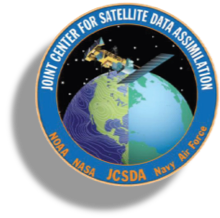Last week a combined JCSDA team from the core staff, NOAA, NASA, and the UK Met Office conducted a code sprint for Variational Bias Correction (VarBC) in JEDI’s Unified Forward Operator (UFO). The US Naval Research Laboratory (NRL) was consulted and included in the pre-sprint discussions as well. The code sprint worked towards adding the ability to apply bias correction to observations by record, like those from aircraft and ships, in addition to channels (e.g. for satellite radiance data). The improvements made during the sprint let JEDI work specifically with observations from aircraft following the NOAA EMC method of correction by aircraft tail number, but the overarching goal was to make the new ability a general method, extending JEDI UFO capabilities when performing bias correction and contributing a big step forward in functionality.
The sprint team led by Dr. Hui Shao, started with a series of pre-planning meetings to establish what tasks needed to be accomplished and assigned them to sprint members. These meetings were credited as critical to the sprint’s accomplishments in the post-sprint retrospective. Pull requests were thoroughly reviewed and tested by other team members on an ongoing basis during the sprint. This allowed problems to be caught quickly and more readily corrected in the initial development phase.
The team accomplished their sprint goal of building the essential framework for records VarBC, merging 12 pull reviews to the sprint development branch by the end of the week. The branch has now passed all its tests with those changes included. Specific projects included adding a converter to change the format of current bias coefficient files, updates to the current bias coefficient converters, and several aircraft-specific components including a converter for aircraft bias coefficients.
A follow-up meeting next week will establish what capabilities need to be added to get records VarBC functional within JEDI now that all the core work is done.

